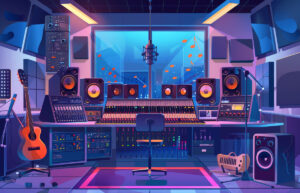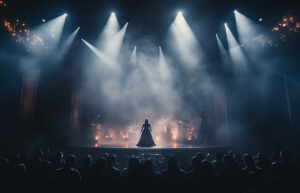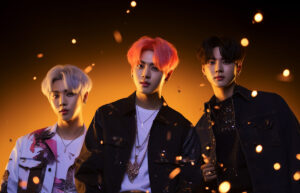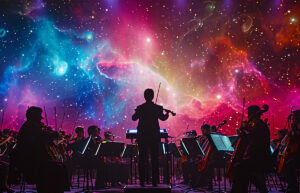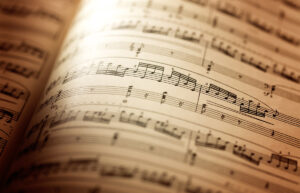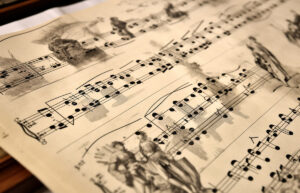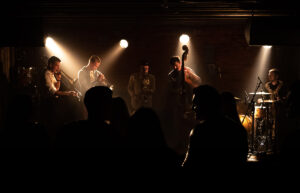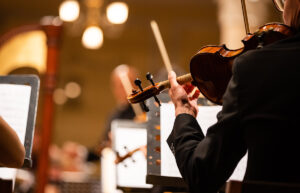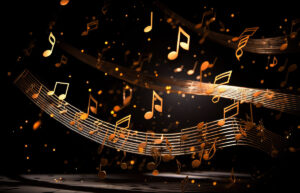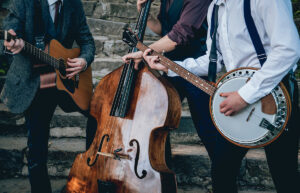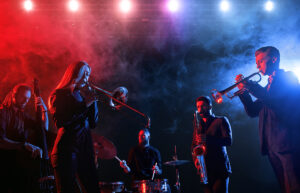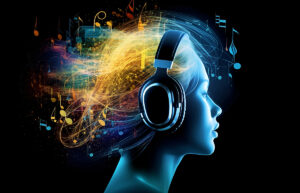What is Emo Music: Meaning, History, Subgenres, Bands & Examples
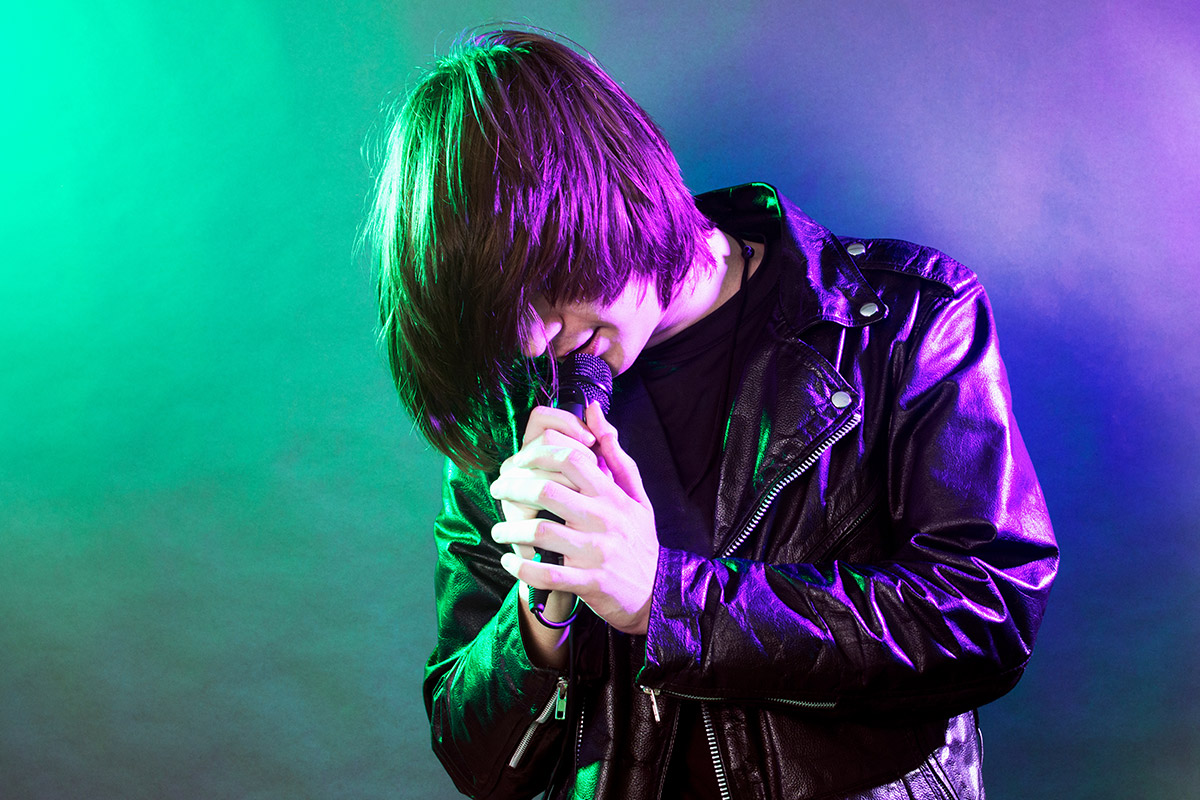
Emo music isn’t just a sound; it’s an emotional landscape painted with raw lyrics, haunting melodies, and a heartbeat that echoes the highs and lows of the human experience. Picture yourself diving into a musical realm where vulnerability meets power chords, where heartache is harmonized, and emotions find their voice. In this article, we’ll embark on a sonic journey to decode what is emo music, exploring its origins, evolution, and the profound impact it has had on generations, inviting you to feel the music and understand its soul.
Welcome to TheDemoStop, now join the community!
Connect with artists, fans and producers around the world.
What is emo music?
Emu music is a biblical, beautiful and transformative singing. It is a genre characterized by its emotional depth, introspective lyrics, and expressive, often confessional, themes.
Emu music began within the hardcore punk scene but evolved into its own distinct style. It typically features melodic guitar-driven music, and heartfelt and personal lyrics, often exploring themes of love, heartbreak, angst, and personal struggles.
Now that you have a basic understanding of ‘what is emo music,’ let’s delve deeper into its intricacies. The genre encompasses various subgenres and influences, blending elements from punk rock, indie rock, and post-hardcore. Over time, emo music has undergone evolution, giving rise to different waves and variations. The ’90s witnessed raw, visceral sounds, while the 2000s and beyond introduced more polished and diverse musical expressions.
Beyond the music itself, emo is often linked with a distinct fashion style, attitude, and a profound sense of emotional authenticity. This connection resonates strongly with its audience, fostering a deep sense of connection between musicians and fans.
History of emo music
To gain a comprehensive understanding of ‘what is emo music,’ it is essential to understand the history of this evolving genre. Emo music emerged in the 1980s as a derivative of the post-hardcore movement, gradually garnering popularity over the years to establish itself as a prominent genre for a new generation of rock music enthusiasts.
In the 1980s, the inaugural wave of emo music originated within the Revolution Summer movement in Washington, D.C. Musicians aimed to diverge from the conventional sound of post-hardcore punk bands. Guy Picciotto, the guitarist and vocalist for Rites of Spring and later Fugazi, shifted away from the harsher elements of the punk scene, directing his focus towards themes of pain, loss, relationship failures, hostility, and other emotionally charged subjects.
Transitioning into the 1990s, the second wave of emo music surfaced on the West Coast and subsequently disseminated, establishing itself in the Midwest. Influences for the late ’90s emo scene encompassed bands like Sunny Day Real Estate, Jawbreaker, and Weezer. This portrayal of suffering and sentimentality resonated with teenage audiences, contributing significantly to the genre’s popularity and giving rise to various subgenres.
By the 2000s, emo music underwent a transformation beyond its hardcore roots, embracing a more radio-friendly sound during its third wave. This evolution propelled the genre into the mainstream, with bands like Jimmy Eat World, My Chemical Romance, and Fall Out Boy achieving notable success. Toward the late 2000s, an emo revival emerged, drawing inspiration from earlier waves of emo music rather than the contemporary power-pop sound.
Characteristics of emo music
Comprehending what is emo music in depth requires understanding the specific characteristics that make up this dynamic musical genre.
Angst
Emo music is often characterized by a sense of emotional turmoil and inner conflict. The lyrics frequently explore feelings of frustration, alienation, and inner turmoil, expressing a sense of unease or dissatisfaction with the world of oneself.
Sensitivity
Emo music delves into raw and vulnerable emotions, embracing sensitivity and introspection. It often seeks to convey authentic and deeply personal experiences, allowing listeners to connect with the artist’s emotional journey.
Dissonance
Emo music occasionally incorporates dissonant sounds or discordant elements, creating an unsettling or tense atmosphere. This use of dissonance adds depth to the emotional landscape, intensifying the feelings conveyed in the music.
Emotional lyrics
Lyrics in emo music are highly emotive and introspective, focusing on themes such as love, heartbreak, self-reflection, and personal struggles. These lyrics aim to evoke strong emotional responses and resonate deeply with listeners.
Distorted guitars
Distorted guitar tones are a hallmark of emo music. The use of heavily distorted or overdriven guitars contributes to the genre’s intense and passionate sound, adding depth and urgency to the music.
Dynamic shifts
Emo music often incorporates dynamic shifts, ranging from quiet, subdued moments to loud, intense crescendos. These variations in volume and intensity help to convey the emotional peaks and valleys within a song, amplifying its impact.
Subgenres of emo music
Emo music has expanded into various subgenres, which are listed below:
Screamo
Screamo is an intense subgenre of emo music characterized by its use of screamed vocals, aggressive guitar riffs, and fast-paced drumming. It often combines elements of hardcore punk with emotional and expressive lyrics. Bands in this subgenre, such as Saetia and Orchid, deliver emotionally charged performances with raw, passionate energy, blending melodic and chaotic elements.
Emo pop-punk
Emo pop-punk emerged as a fusion of pop-punk and emo music, incorporating catchy melodies, energetic rhythms, and emotionally driven lyrics. Bands like Fall Out Boy and Panic! At The Disco gained popularity within this subgenre, offering a more accessible and mainstream-friendly version of emo with upbeat tempos and sing-along choruses.
Emo pop-punk clearly defines what is emo music by infusing it with the hooks and anthemic qualities of pop-punk, creating a distinctive sound characterized by its blend of emotional depth, relatable lyricism, and energetic musicality.
Midwest emo
Originating in the American Midwest, this subgenre emphasizes intricate guitar work, complex song structures, and confessional lyrics. Bands like American Football and Cap’n Jazz are notable for their use of intricate guitar melodies, unconventional time signatures, and emotive yet introspective lyrics, contributing to a more subdued and contemplative sound within the emo spectrum.
Welcome to TheDemoStop, now join the community!
Connect with artists, fans and producers around the world.
Emocore
Emocore, short for “emotional hardcore,” emerged in the ’80s as a precursor to emo. It blends the aggression and intensity of hardcore punk with emotive and introspective lyrics. Bands like Rites of Spring and Embrace are considered pioneers of this subgenre, incorporating emotional depth and vulnerability into their hardcore sound and influencing the development of later emo music.
Emo rap
Emo rap, also known as emo-trap, is a fusion genre that combines elements of emo music with hip-hop and trap influences. Artists like Lil Peep and Juice WRLD infused emotionally charged lyrics and themes of depression, heartbreak, and inner struggles into their music, often accompanied by trap-style beats, creating a subgenre that explores emotional vulnerability within the context of rap music.
Examples of emo music
Cute Without the ‘E’ by Taking Back Sunday
This song by Taking Back Sunday is a quintessential emo anthem, known for its energetic guitar riffs, passionate vocals, and emotionally charged lyrics. It encapsulates themes of heartbreak and betrayal, showcasing the band’s dynamic sound and heartfelt delivery.
I’m Not Okay (I Promise) by My Chemical Romance
My Chemical Romance’s hit song “I’m Not Okay (I Promise)” is an iconic emo track characterized by its catchy hooks, anthemic chorus, and angst-ridden lyrics. It resonated with audiences for its relatable themes of teenage angst and the challenge of fitting in.
Sugar, We’re Goin Down by Fall Out Boy
Fall Out Boy’s “Sugar, We’re Goin Down” is a popular emo pop-punk anthem known for its infectious melody, introspective lyrics, and Patrick Stump’s distinctive vocals. It embodies the emo-pop sound that brought the band widespread recognition and success.
Move Along by The All-American Rejects
While not strictly emo, The All-American Rejects’ “Move Along” incorporates elements of emo-pop and rock with its anthemic chorus, emotive lyrics, and a driving rhythm. It resonated with audiences for its message of perseverance and resilience.
Sunday by Jimmy Eat World
“Sunday” by Jimmy Eat World is a track that captures the essence of the mid-2000s emo. With its melodic guitar lines, emotive vocals, and reflective lyrics, the song showcases the band’s ability to evoke emotions and create a sense of intimacy within their music.
Understanding In A Car by Thursday
This song by Thursday is a standout example of screamo within the emo genre. Known for its intense and passionate delivery and screamed vocals. The dynamic instrumental encapsulates screamo music’s raw energy and emotional depth.
Top emo bands
My Chemical Romance
My Chemical Romance (MCR) rose to prominence in the 2000s, becoming one of the most influential bands in the emo music scene. Its theatrical performances, passionate vocals by Gerard Way, and emotionally charged lyrics propelled it to stardom. Albums like “The Black Parade” and “Three Cheers for Sweet Revenge” solidified their place as emo icons.
The Used
Known for their raw and intense sound, The Used combined post-hardcore and emo influences to create emotionally charged music. Lead vocalist Bert McCracker’s powerful voice and the band’s ability to infuse energy into their songs resonated with audiences. Albums like their self-titled debut and “In Love and Death” showcased their impactful blend of aggression and vulnerability.
Paramore
Fronted by the charismatic Hayley William, Paramore brought a vibrant and dynamic energy to the emo-pop scene. Its music skillfully blended pop-punk with emo elements, delivering catchy melodies, introspective lyrics, and an electrifying stage presence. Hits like “Misery Business” and “Decode” solidified their status as influential figures in alternative and emo music.
Good Charlotte
Good Charlotte gained popularity in the early 2000s with their anthemic and relatable songs. Combining pop-punk with emo sensibilities, the band addressed themes of teenage angst, societal issues, and personal struggles. Songs like “The Anthem” and “Lifestyles of the Rich & Famous” resonated with a generation grappling with identity and societal pressures.
New Found Glory
New Found Glory emerged in the late 1990s, blending pop-punk and emo influences. Known for its energetic and catchy tunes, the band became influential in the genre, showcasing heartfelt lyrics and infectious hooks. Albums like “Stick and Stones” and “Catalyst” solidified their place as prominent figures in the emo-pop landscapes.
Yellowcard
With the incorporation of pop-punk, emo, and violin elements in their music, Yellowcard created a distinctive sound. Tracks like “Ocean Avenue” and “Only One” showcased the band’s ability to intertwine catchy melodies and emotive lyrics, earning them a dedicated fanbase within the emo and pop-punk community.
Emo music today
Emo music roots go back decades, but what is emo music today? Emo music has evolved and diversified in contemporary times, influencing alternative and indie music scenes. While it may not dominate the mainstream as it did in the early 2000s, its impact persists through various subgenres and its influence on modern artists.
Today, emo music incorporates a broader range of sounds and styles, blending elements from genres such as indie rock, pop-punk, and hip-hop. Artists continue to explore emotive and introspective themes in their lyrics, addressing issues related to mental health, relationships, and personal struggles.
Some contemporary emo musicians fuse traditional emo elements with newer musical approaches, experimenting with production techniques and expanding the sonic boundaries of the genre. This evolution led to a resurgence of interest in emo among both new and established artists, allowing the genre to remain relevant and influential within the alternative music landscape.
Welcome to TheDemoStop, now join the community!
Connect with artists, fans and producers around the world.
Conclusion
What is emo music?
Emo music is a genre characterized by emotionally expressive lyrics, introspective themes, and melodic, often intense, musical compositions. It originated as a subgenre of hardcore punk, exploring feelings of angst, vulnerability, and personal struggles, aiming to evoke strong emotional connections with listeners.
History of emo music
Emo music emerged in the mid-1980s from hardcore punk, evolving to emphasize emotional lyrics and introspective themes. It expanded in the ’90s, gained mainstream success in the 2000s, and continues influencing alternative music today through various subgenres and diverse sounds.
Characteristics of emo music
- Angst
- Sensitivity
- Dissonance
- Emotional lyrics
- Distorted guitars
- Dynamic shifts
Subgenres of emo music
- Screamo
- Emo pop-punk
- Midwest emo
- Emocore
- Emo rap
Examples of emo music
- Cute Without The ‘E’ by Taking Back Sunday
- I’m Not Okay (I Promise) by My Chemical Romance
- Sugar, We’re Goin Down by Fall Out Boy
- Move Along by The All-American Rejects
- Sunday by Jimmy Eat World
- Understanding In A Car by Thursday
Top emo bands
- My Chemical Romance
- The Used
- Paramore
- Good Charlotte
- New Found Glory
- Yellowcard
Emo music today
Understanding what is emu music today is crucial. Emo music has diversified, blending with indie and alternative styles. While not as mainstream, its influence remains strong. Contemporary emo artists explore emotional themes, incorporating new sounds and approaches while keeping the genre relevant in alternative music.
FAQs
What is emo music?
Emo music is a genre recognized for its emotionally charged lyrics and introspective themes. Known for its expressive and often confessional nature, emo music provides a cathartic outlet for both musicians and listeners alike, fostering a sense of shared emotion and understanding.
What is the history of emo music?
Emo music originated from hardcore punk in the mid-1980s, evolved with emotionally charged lyrics, gained prominence in the 2000s, and continues to influence alternative music.
What are the characteristics of emo music?
- Angst
- Sensitivity
- Dissonance
- Emotional lyrics
- Distorted guitars
- Dynamix shifts
Who are the top emo bands?
- My Chemical Romance
- The Used
- Paramore
- Good Charlotte
- New Found Glory
- Yellowcard
What are the different sub-genres of emo music?
- Screamo
- Emo pop-punk
- Midwest emo
- Emocore
- Emo rap
What are the examples of emo music?
- Cute Without The ‘E’ by Taking Back Sunday
- I’m Not Okay (I Promise) by My Chemical Romance
- Sugar, We’re Goin Down by Fall Out Boy
- Move Along by The All-American Rejects
- Sunday by Jimmy Eat World
- Understanding in a Car by Thursday
Who is the most successful emo band?
My Chemical Romance is the most successful emo band. Its theatrical performances, passionate vocals by Gerard Way, and emotionally charged lyrics propelled it to stardom.


